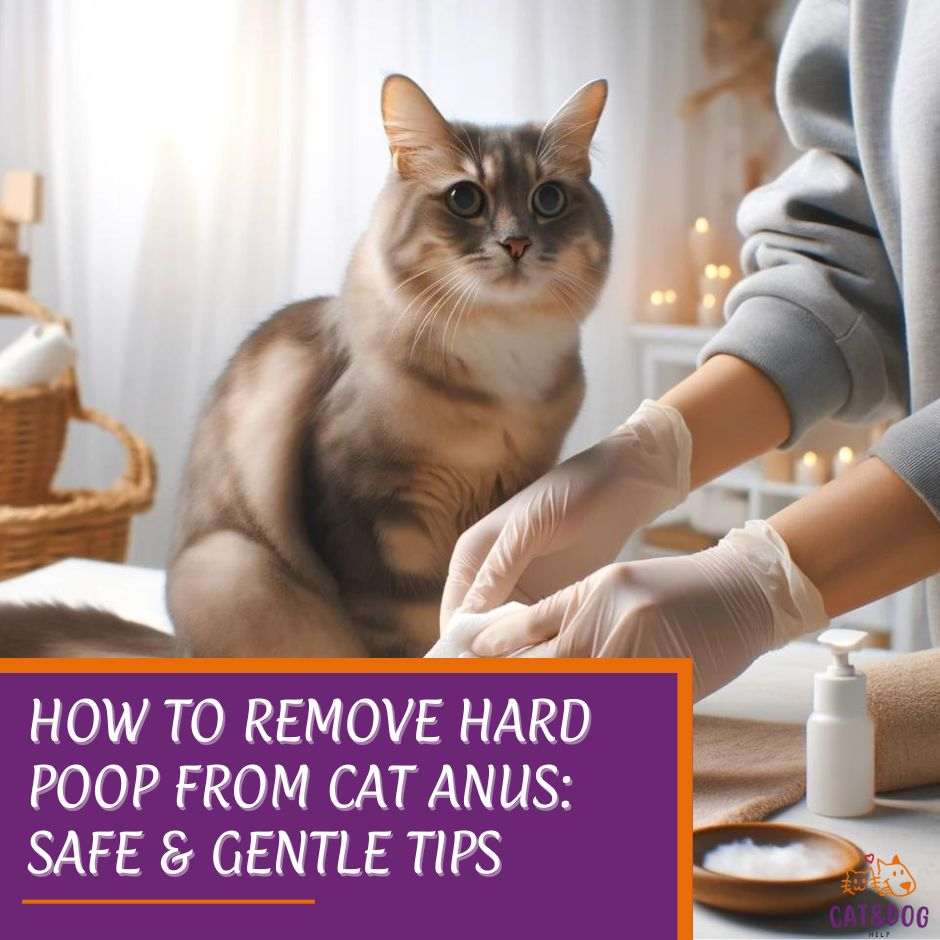Having a kitty companion can be immensely rewarding, but as a responsible cat owner, sometimes you’ll find yourself facing less glamorous tasks, like dealing with your fur baby’s hard poop issues.
So, how to remove hard poop from a cat’s anus? Through this article, I’ll show you some tips and guidance to help your problem, pet parents.
Sometimes, however, cats need a little help from their humans in removing hard poop from their cat’s anus, especially for long-haired cats with excess cat fur in the area.
Trimming the fur around the anus with a small pair of scissors can make it easier to clean and prevent future issues with the anal glands.
Now, suppose you’ve noticed your cat scooting across the carpet – yes, that’s as unpleasant as it sounds – or making frequent but unsuccessful trips to the litter box. In that case, it’s time to step in and lend a hand.
Don’t worry; this guide is here to help you do just that, in the most loving and least invasive way possible!
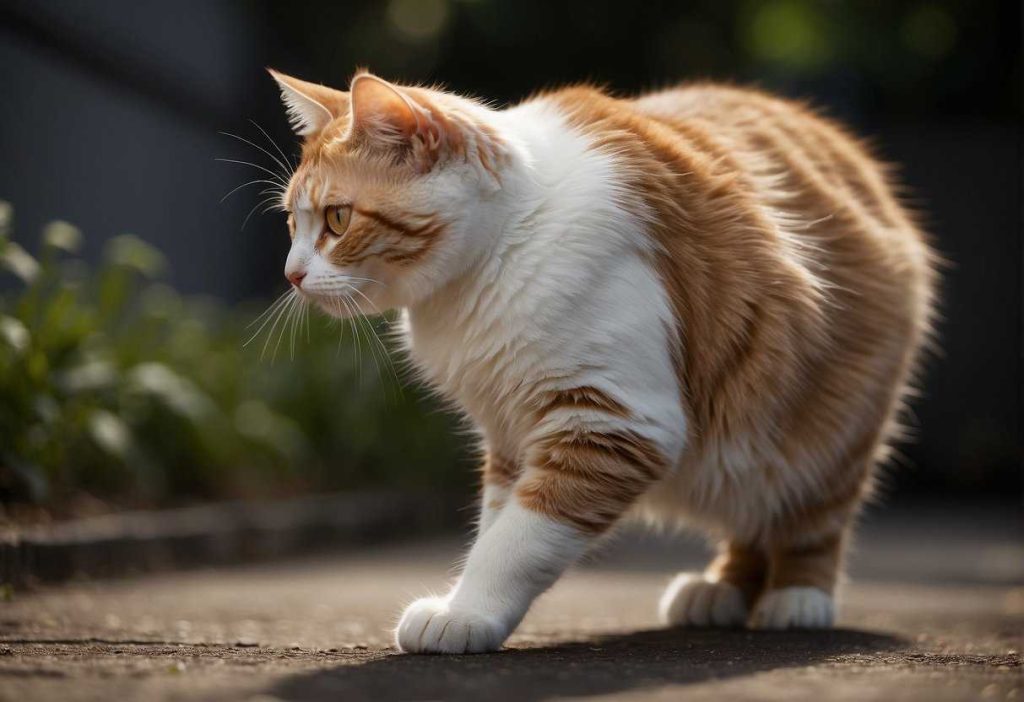
Understanding when and how to take action is crucial. You wouldn’t want your feline friend to suffer in silence, would you?
It might seem a bit icky, but it’s a common problem that can cause serious health issues for your furry friend if not addressed promptly. Why does this happen, you ask?
Well, there can be several reasons, like dehydration or dietary issues, causing stool to harden and get stuck, making it tough for your cat to relieve itself comfortably due to a variety of factors such as dehydration, dietary factors, and underlying medical conditions.
Cats with long hair around their anus are at risk of developing fecal mat after defecating.
Diarrhea can also cause fecal mat because the fecal matter is usually softer, thus it tends to stick to the cat more than firmer fecal matter.
If fecal matter becomes stuck in the cat’s hair and is not removed, it will quickly become matted, causing discomfort and changes in the cat’s behavior.
As a cat owner, it is crucial to be aware of any changes in your cat’s behavior and physical symptoms, including issues with hard poop stuck in their anus, also known as feces.
Remember, nearly two-thirds of U.S. households have pets, and if you’re one of the many who share their home with a cat, you know it’s important to keep up with their hygiene for both their comfort and health. (1)
Let’s keep our furry friends happy and healthy by removing hard poop from their anus and cleaning their cat’s litter box, with some practical know-how.
Key Takeaways
- Hard poop in cats can cause discomfort and health issues, requiring prompt attention.
- Knowing how to safely assist your cat with hard poop removal can prevent further complications.
- Regular maintenance and understanding the causes behind fecal issues help in long-term prevention and care.
Preparing for the Cleaning Process
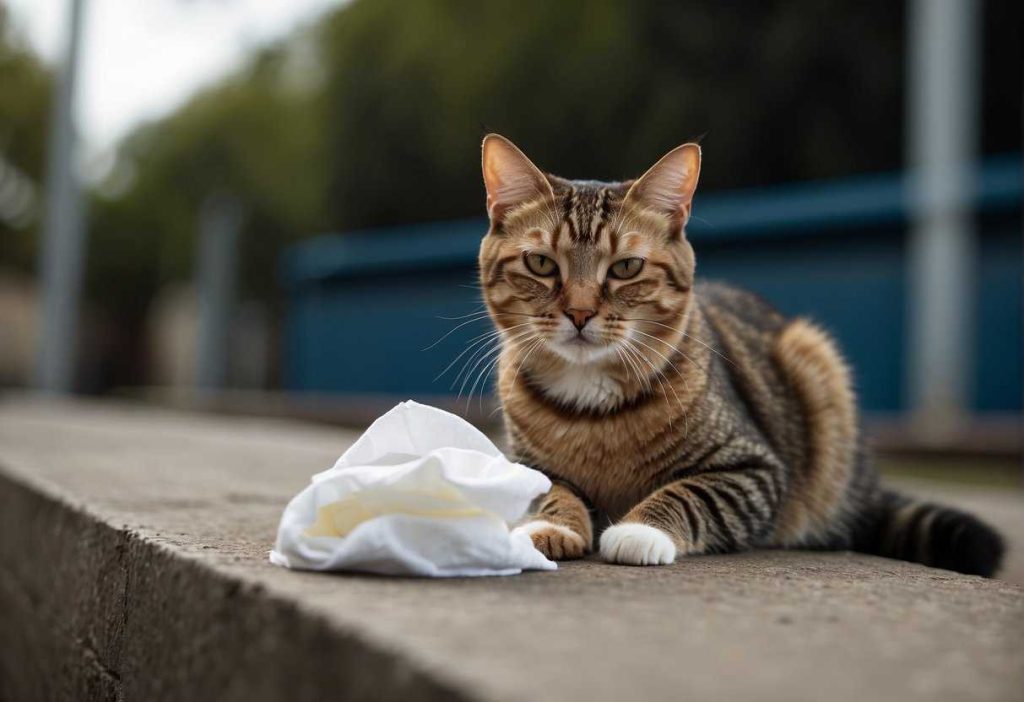
Got a feline friend in need of a bottom clean-up? No worries, let’s gear up to gently help your kitty. First things first, gather up the essentials. You’ll need:
- Gloves: A must to keep things hygienic.
- Warm water: Just the right temperature to keep your cat comfy.
- Mild soap: Think kitten-safe. I recommend using brands like Earthbath or Burt’s Bees for Pets.
- Pet-safe wipes: Unscented is the way to go, like Pogi’s Grooming Wipes.
- Lubricants: Sometimes a little dab of a cat-safe lubricant can make things easier. (2)
Remember, the idea is to keep your cat stress-free. So, let’s make this as soothing as a spa day, shall we? Here’s a little checklist to help create that zen vibe:
- Location: Pick a quiet spot—perhaps a cozy bathroom?
- Soft talk and treats: Keep your voice down to a lullaby level and have some kitty treats on hand—bribes are totally fair game here.
- Research-backed tips: According to the Journal of Feline Medicine and Surgery, a calm environment drastically reduces stress for cats during grooming. (3)
Ready to get started? Don your gloves, prep your tools, and let’s keep fluffy’s tail wagging happily! 🐾
How to Remove Hard Poop from Cat Anus: Step-by-Step Guide
Softening the Hard Poop:
First things first, let’s make things a bit easier for you and your kitty. You need to soften the poop to make the removal process as smooth as possible.
- Warm Water Method:
- Fill a bowl with warm water (not hot!).
- Soak a soft cloth in the water, and lightly dab the poop to soften it.
- Pet-Safe Lubricant:
- Apply a small amount of a pet-safe lubricant around the area.
For visual learners, this tutorial video from a reputable vet can show you exactly how it’s done. Don’t have a video link? No worries, imagine smoothing a tiny brow worried about bath time.
Gently Removing the Poop:
Now that it’s softened, let’s remove that pesky poop carefully, shall we?
- Use soft tissues or cotton balls.
- Apply gentle pressure around the anus.
- Encourage the poop to loosen without causing discomfort.
Here’s a little nugget of wisdom from a fellow cat owner, “Take it slow, and if your cat gets distressed, give them a break.”
Cleaning and Disinfecting the Area:
Finally, we want to keep the backdoor area clean and infection-free.
- Clean the area with a pet-safe wipe or a damp cloth.
- Apply a vet-approved disinfectant.
In a study, pet-safe disinfectants were found effective in eliminating germs without harming our fluffy friends. Now that’s a clean victory!
Reference Guides For Pet Owners

Here’s your go-to guide for tackling the tricky business of removing hard poop from your cat’s anus, complete with nifty product tips and visual aids to make the job easier.
Before you begin, it’s important to gather necessary supplies such as gloves, warm water, mild soap, a towel, and a lubricant like petroleum jelly or KY Jelly.
These necessary supplies can help ensure a safe and hygienic process for both you and your cat’s skin.
If you’re unsure about how to properly groom your cat, you can also seek the help of a professional groomer who can provide a sanitary shave for your cat’s anus, especially if there are mats or hard poop caught in the fur.
Let’s roll up our sleeves and help your little buddy out with a gentle touch using a paper towel, shall we?
Product Recommendations:
Here are some paw-picked products to consider:
- Mild Pet-Friendly Lubricant:
- Pros: Eases the removal process, gentle on your cat’s skin.
- Cons: May require a bath afterward.
- Disposable Gloves:
- Pros: Keeps your hands clean, and affordable.
- Cons: Single-use, not eco-friendly.
- Soft Tissues or Cotton Balls:
- Pros: Soft on your cat’s skin, easily disposable.
- Cons: Can be messy if not handled properly.
Remember to sidestep soaps and harsh chemicals, pal! Your cat’s derrière will thank you.
Visual Guides for Clarity:
Looking under your cat’s tail isn’t the most glamorous part of pet ownership, right? But hey, visuals can be a game-changer.
Search for step-by-step videos or image guides online that show you exactly how to clean your cat’s bum. Seeing the process can be a whole lot easier than reading about it, trust me.
Here’s a brief step-by-step—just the essentials:
- Suit up in those gloves.
- Apply lubricant carefully around the affected area.
- Softly wipe with tissues or cotton balls.
- Dispose of the waste safely.
- Reward your furball (and yourself) for a job well done.
Don’t forget to check for underlying health issues if this is a recurring theme. Your vet should be your first call if things seem out of the ordinary.
Keeping your kitty clean is not just spick and span; it’s also about their health and comfort. Happy cleaning!
Identifying the Causes
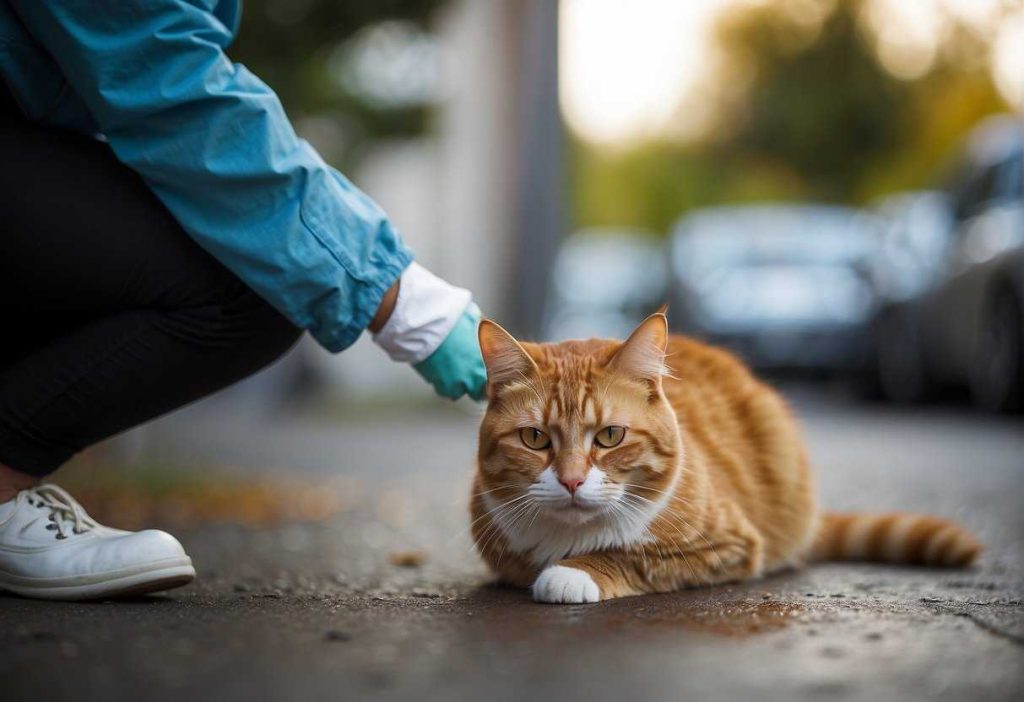
Health and Dietary Causes
Ever wondered why your furry friend might be dealing with the uncomfortable issue of hard poop stuck near their behind? Let’s zero in on a few culprits and get to the bottom of this stinky situation!
Dehydration and Diet :
Could it be your cat isn’t drinking enough water? Or perhaps their diet isn’t quite up to scratch?
- Lack of Hydration: Just like us, when cats don’t drink enough water, their bodies can’t moisturize the stool, leading to constipation. (4)
- Poor Diet: A diet lacking in fiber or high in indigestible materials might be the villain here. (5)
Consulting your vet for a diet high in moisture and fiber could be your secret weapon in combatting these pesky poop problems.
Underlying Health Conditions :
It’s not always what they eat or drink. Sometimes, the root issue might be a bit more complex:
- Chronic Conditions: For instance, kidney disease or hyperthyroidism can throw a wrench in your cat’s digestive harmony. (6)
- Medication Side Effects: Is your cat on any new meds? Side effects might include constipation.
Just remember, if you suspect any of these health concerns, it’s best to let the pros (a.k.a. your vet) take the lead.
Remember, by tuning into your cat’s health and eating patterns, you’re already taking a step in the right direction. No fluff, just the straight-up facts to keep those tails wagging and the litter box issues at bay!
Long-term Care and Prevention
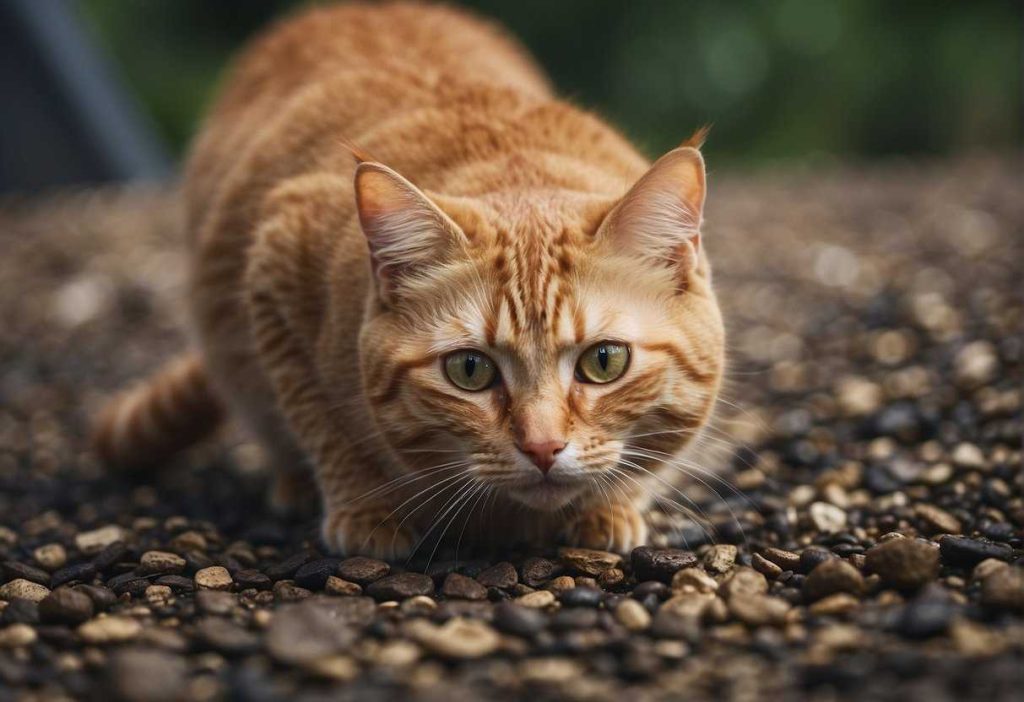
Let’s talk a bit about long-term care and prevention to save you from future hard-poop predicaments!
Dietary Adjustments for Prevention
What’s your cat munching on? Adjusting your cat’s diet can work wonders. Adding more fiber can keep everything moving smoothly, and ensuring your kitty stays well-hydrated will soften stools. Consider:
- High-fiber cat food: Promotes digestive health and consistent stools. (7)
- Fresh water access: Cats can be finicky, but a clean bowl or a flowing fountain encourages drinking.
Regular Grooming and Health Checks
A grooming routine isn’t just for looking pretty. It’s practical, too! Here’s what you can do:
- Trim the hair around the butt; less mess, less stress!
- Regular brushing helps reduce excess hair intake, which can lead to less… let’s say ‘blockage’.
When to Consult a Veterinarian
Not sure if a vet visit is needed? If you notice these signs, it might be time:
- Straining or pain during bowel movements.
- Changes in litter box habits or stool consistency.
Remember, you’re not alone in this poop crusade. Your vet’s there to help out when things get icky.
Keep an eye out for those subtle hints that your cat’s backside might be in some strife, and you’ll have a much happier kitty!
Quick Recap
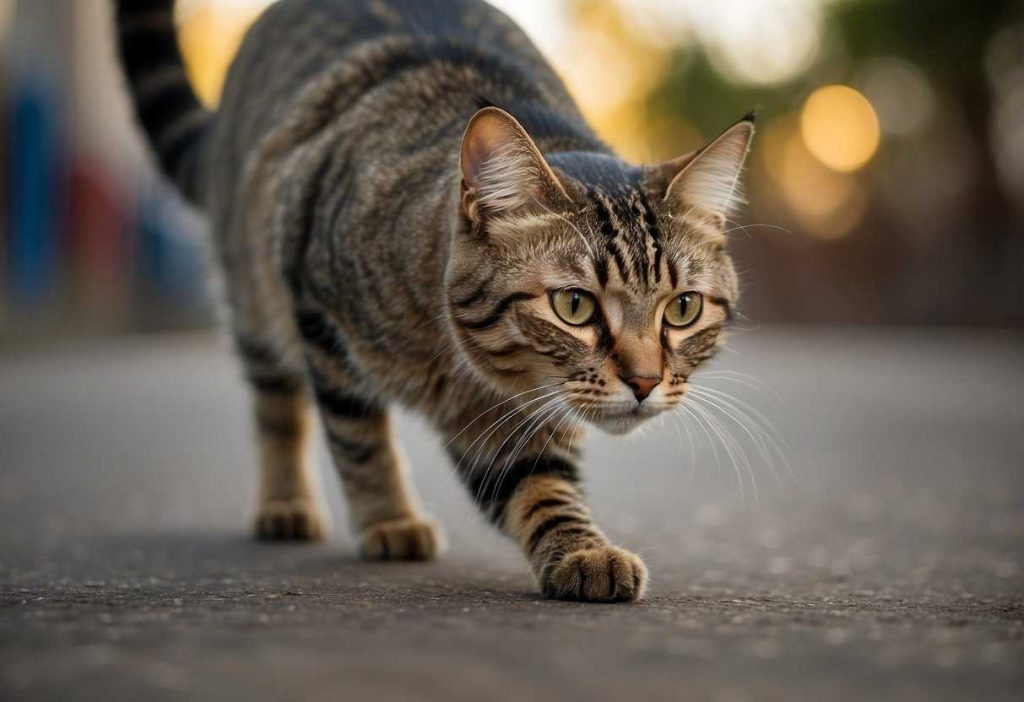
Stay vigilant on the litter front and keep the butt fluff tidy; your kitty will thank you (probably not, but we can dream).
Have you ever encountered the unsightly predicament where your feline friend is stuck with dried poop on their backside? Here’s a quick guide to help you tackle this delicate situation with care.
Step-by-Step Guide:
- Prepare Your Materials: Gather a damp cloth and unscented baby or pet wipes.
- Position Your Cat: Ensure your cat is comfortable and secure.
- Gentle Cleaning: Very carefully wipe the area. Use gentle motions and avoid harsh rubbing.
Preventative Measures:
- Regular Grooming: Keep your cat’s coat trimmed around the rear to minimize fecal matter getting trapped.
- Diet Check: Monitor your cat’s diet; hydration and fiber are crucial for preventing constipation.
- Observation: Keep an eye on your cat’s litter box habits for any signs of irregularity.
Further Reading and Expert Advice: Expand your knowledge and stay informed.
- Consult your vet for personalized advice.
- For in-depth insights, refer to reputable sources like The Cat Bandit Blog or visit TheCatSite for community experiences.
Remember, handling this with tenderness is key – you wouldn’t want someone yanking at your delicates, would you? And if the situation seems dire, don’t play hero – your vet’s there for a reason.
Stay vigilant on the litter front and keep the butt fluff tidy; your kitty will thank you (probably not, but we can dream). Good luck with your fur baby and remember, it’s always a two-person job.
Person A grabs a towel and wraps the front end of the cat up, while Person B uses a brush to gently remove any tangles from the long fur and trim the area, being careful not to accidentally cut the cat’s delicate claws.
Remember to handle your cat with affection and patience during this process to ensure their comfort and well-being and to check for any signs of discomfort.
Frequently Asked Questions
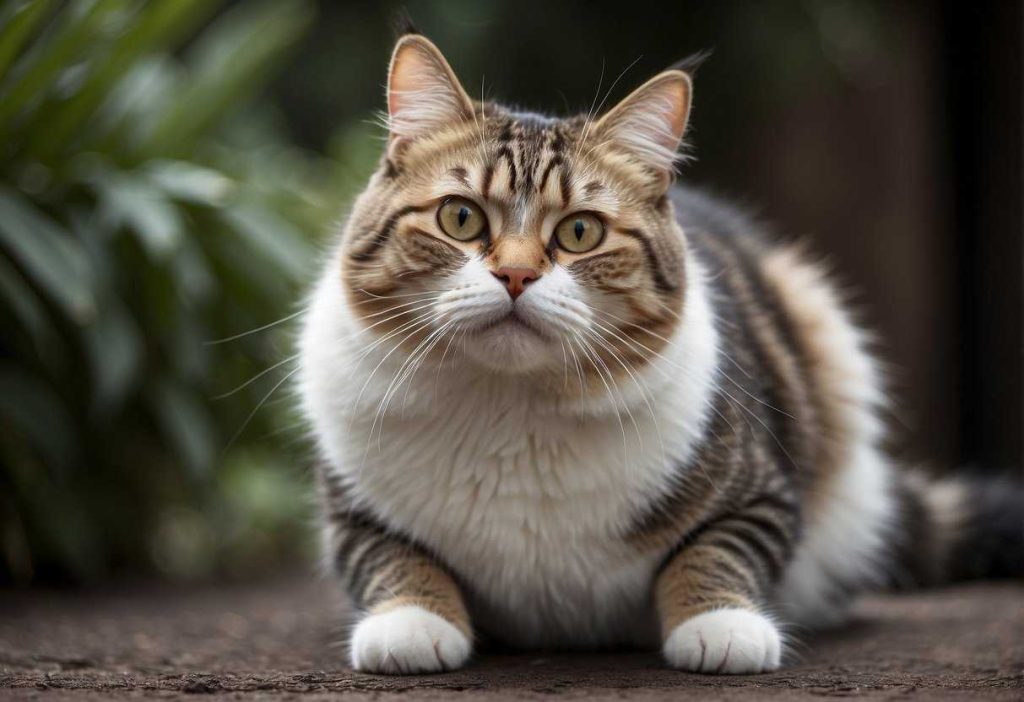
Dealing with hard poop on your cat’s anus can be a delicate situation, but don’t worry, you’ve got this! Here’s a helpful guide to answer some common questions and get your furry friend feeling comfy again.
What immediate steps should I take if I notice hard poop on my cat’s anus?
If you spot hard poop on your cat’s behind, gently remove it using a damp cloth or unscented baby wipe.
Be sure to be gentle to avoid causing any discomfort to your buddy.
How can I prevent hard poop from forming on my cat’s anus in the future?
To prevent hard poop from building up, ensure your cat stays hydrated and consider adding fiber to their diet. Routine grooming can also help keep their backside clean.
What are the signs that I should take my cat to the vet for hard poop issues?
Signs to watch for include your cat’s straining while using the litter box, blood in their stool, unusual crying, or a prolonged period with hard poop issues.
If you see these, it’s time for a vet visit.
Can certain diets contribute to hard poop in cats?
Yes, diets low in fiber or moisture can lead to hard stools. Consult your vet about high-fiber foods and whether wet food could help keep things moving smoothly.
How often should I groom my cat to prevent fecal matting?
Aim to groom your cat multiple times a week, though long-haired breeds might need daily brushing. This keeps their coat free of mats and their backside clean.
Are there any specific products you recommend for removing hard poop from a cat’s anus?
Look for pet-specific wipes or a gentle, cat-safe moist towelette. Avoid anything with harsh chemicals that could irritate your cat’s sensitive skin.
What should I do if my cat seems stressed or scared during the cleaning process?
Keep it calm and take breaks if needed. Offer treats as a soothing reward, and associate the cleaning routine with a relaxed and positive experience.
- Free Online Casino Games: What You Need to Know - July 26, 2025
- Ideal Casinos Mobile: The Ultimate Guide to Mobile Betting - July 26, 2025
- The Ultimate Overview to Casino Site Gamings Online - July 26, 2025

